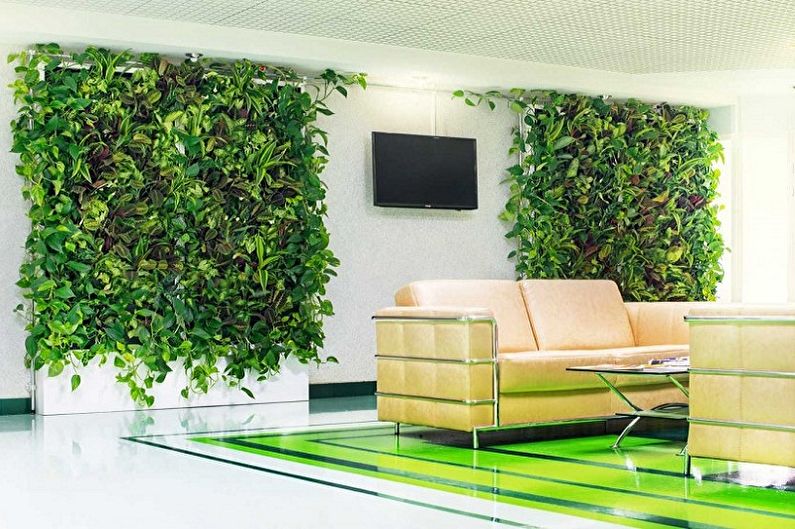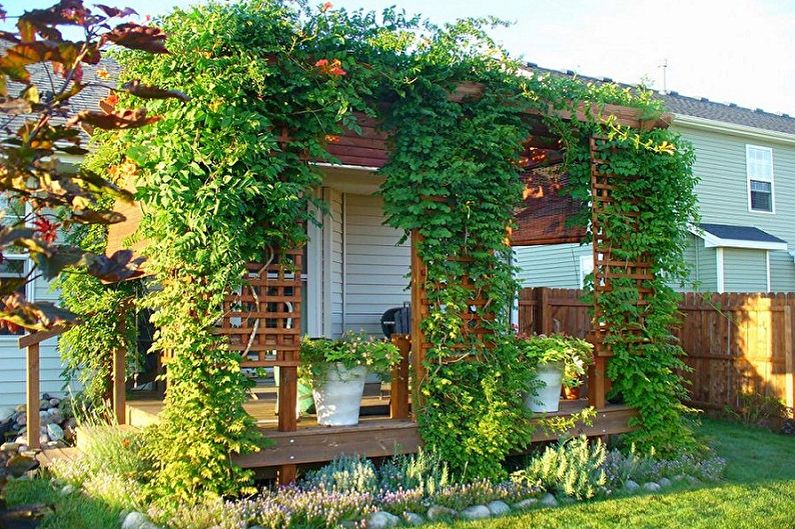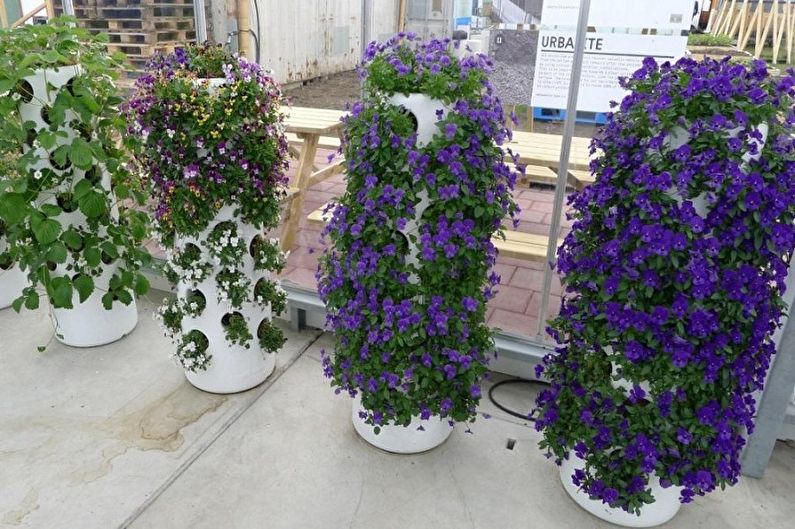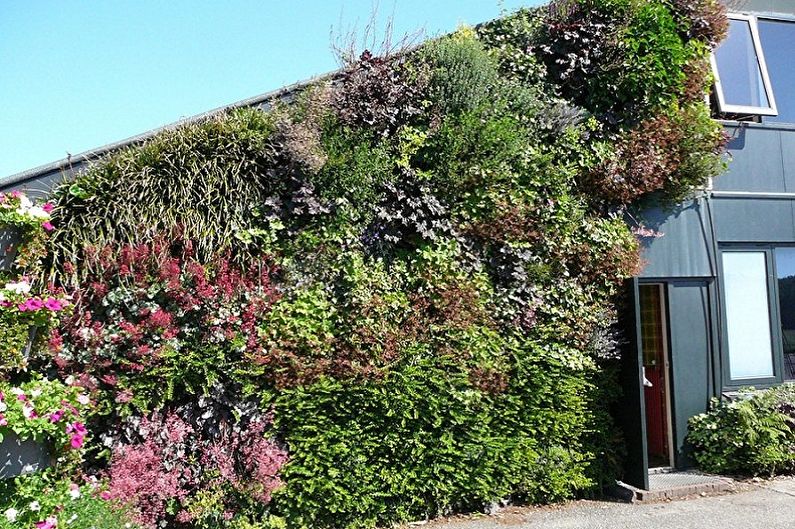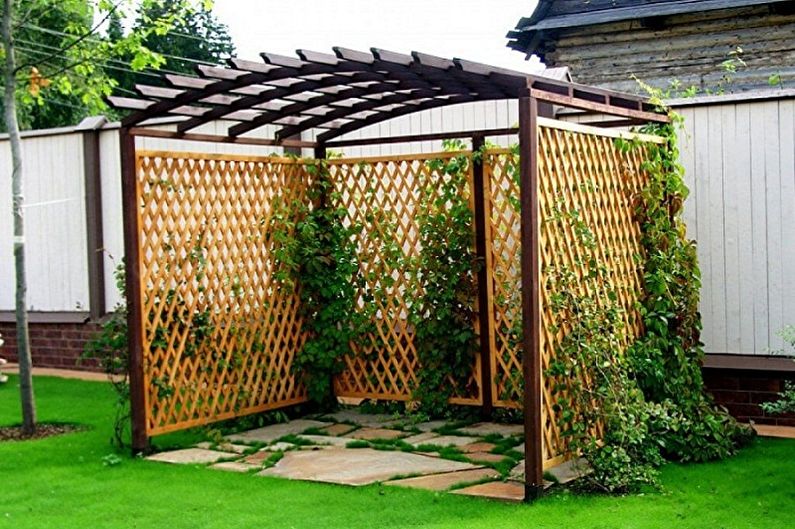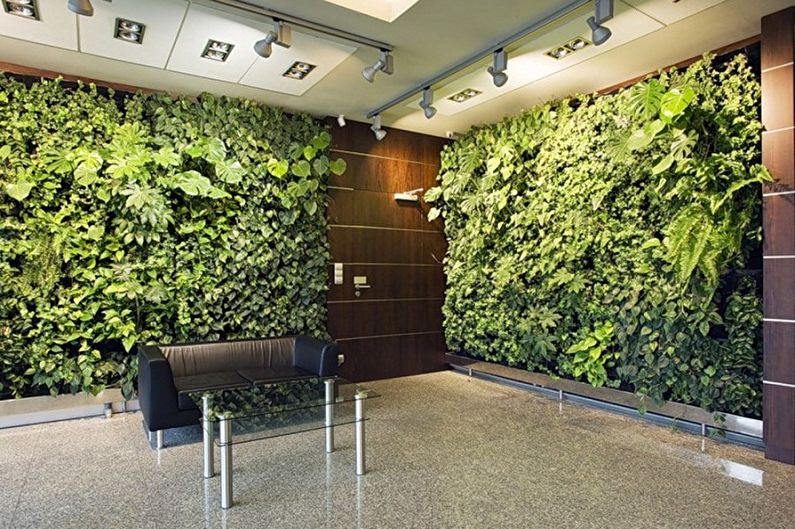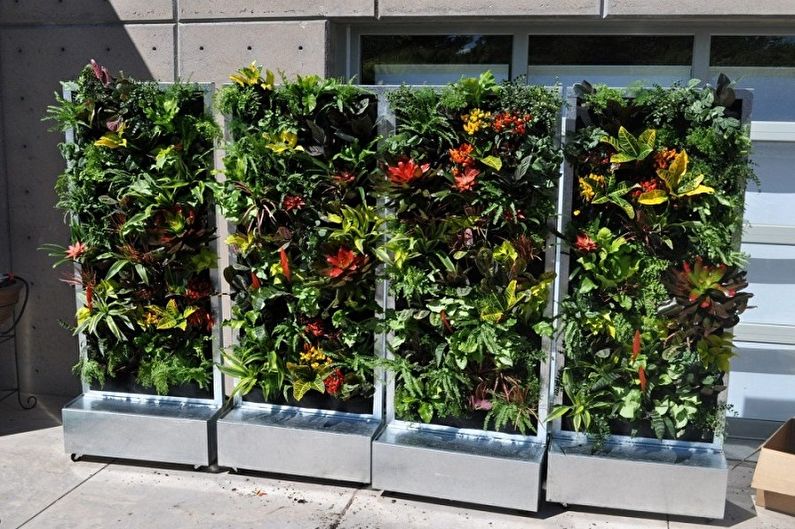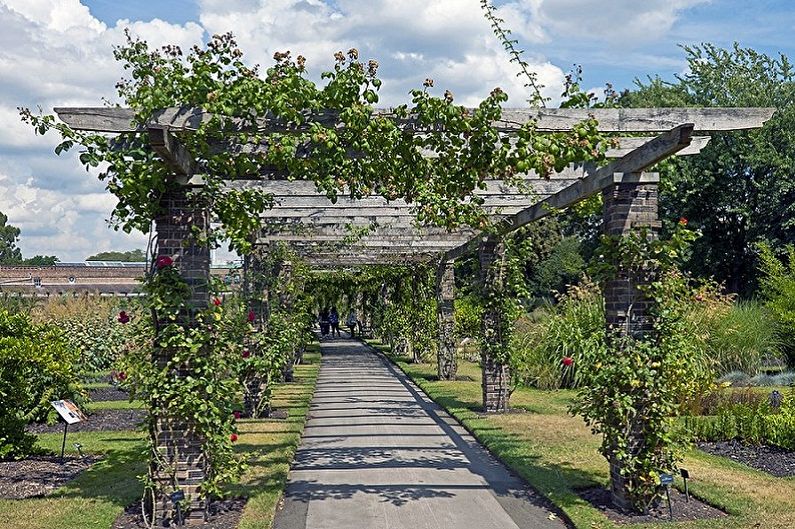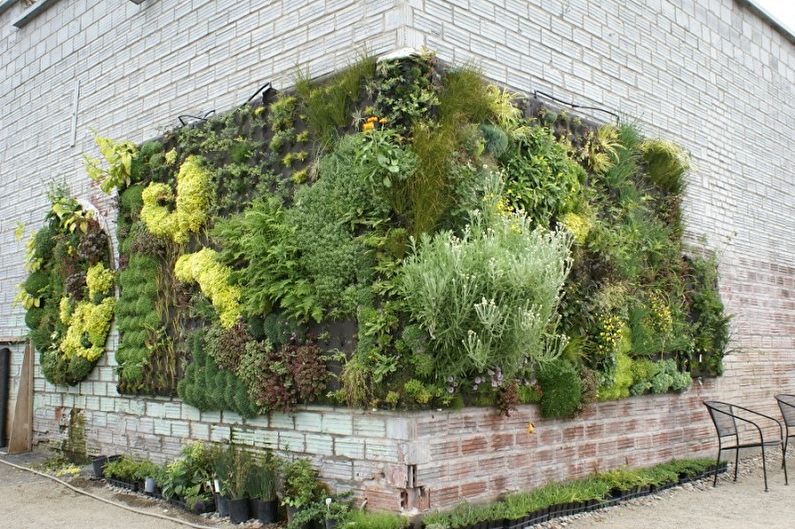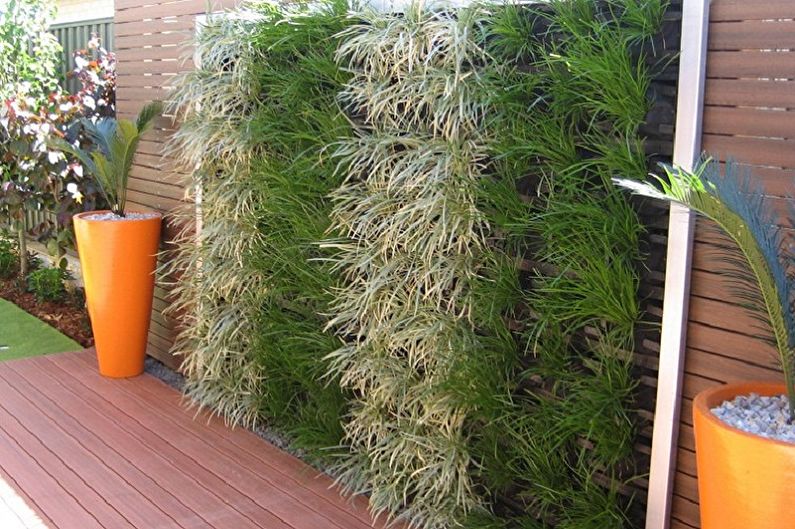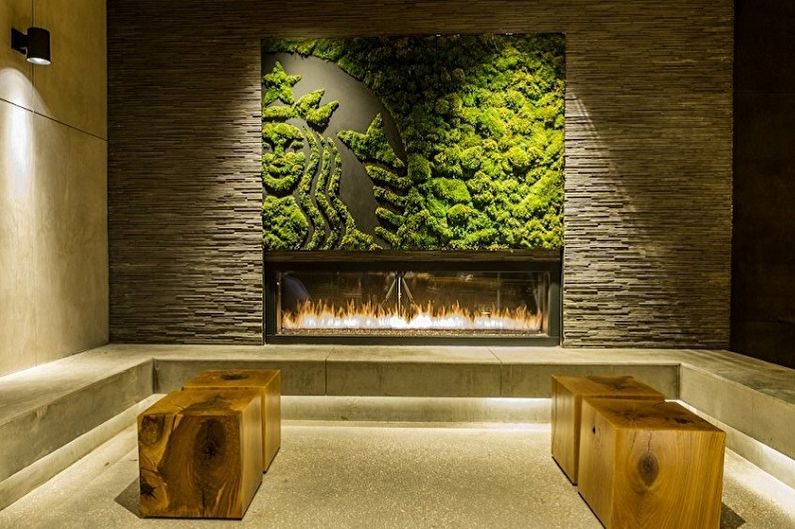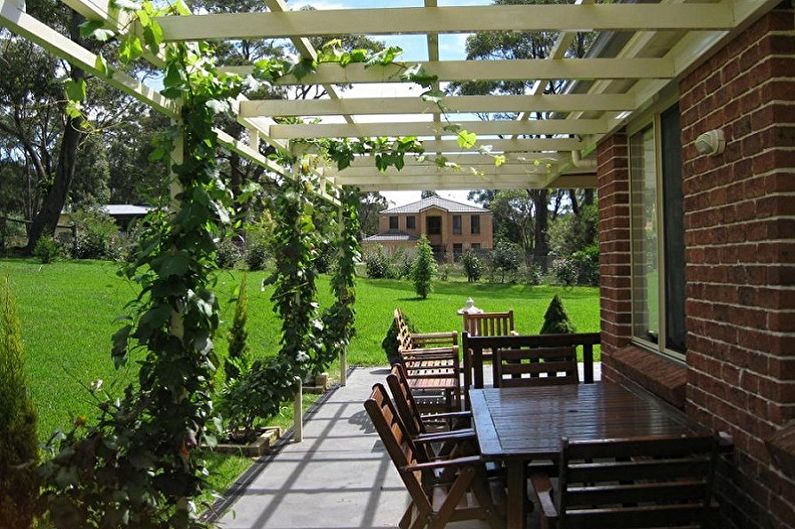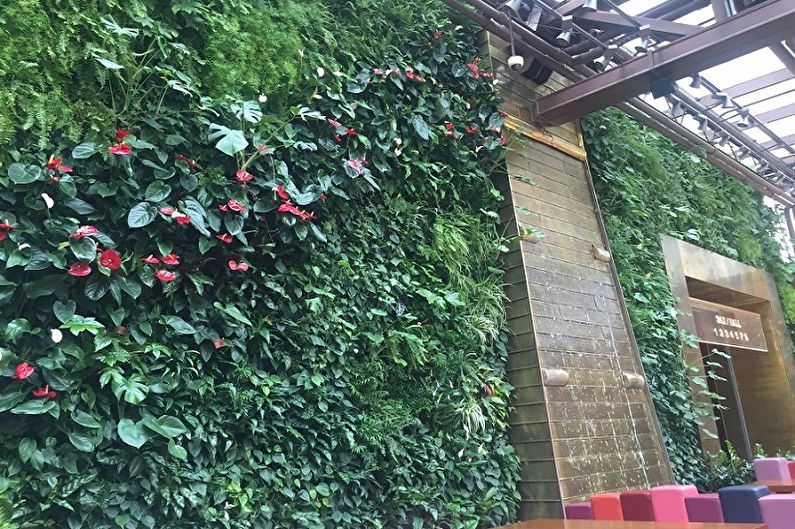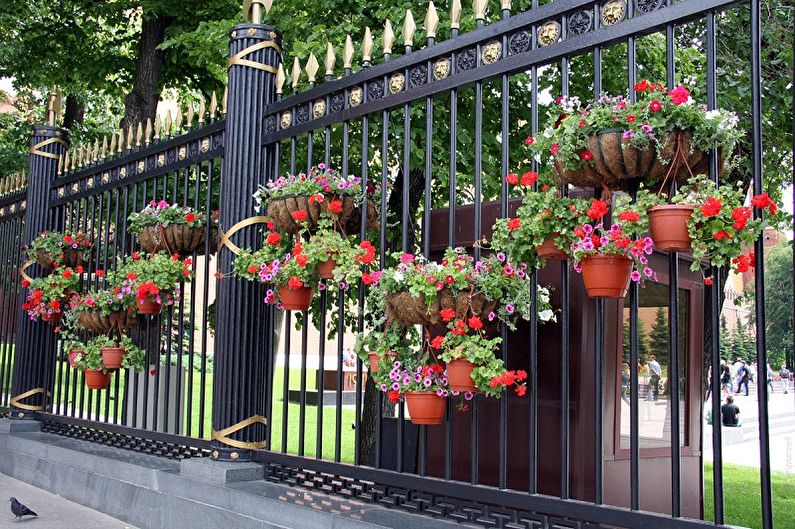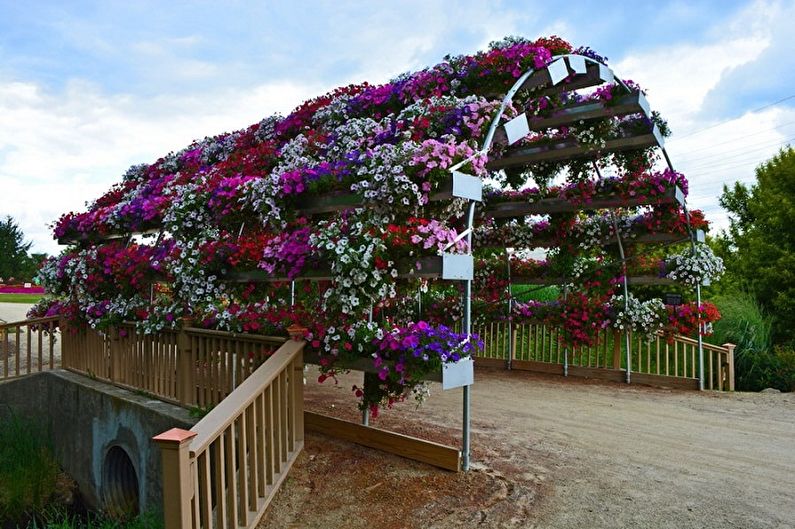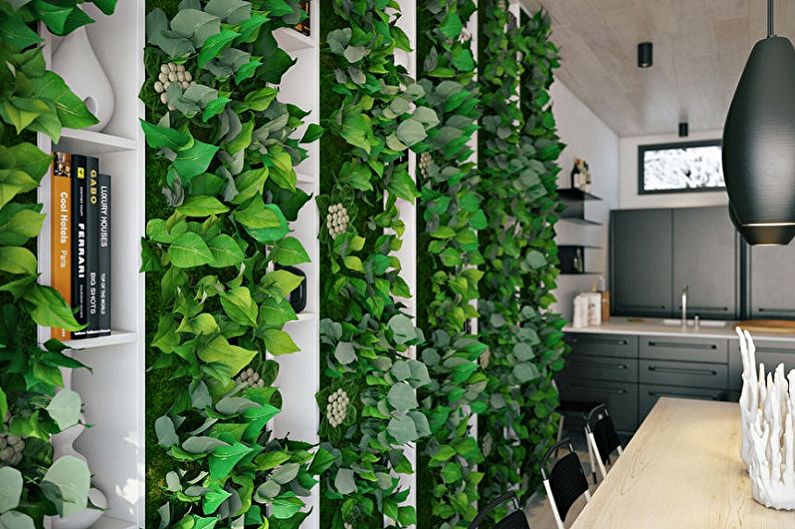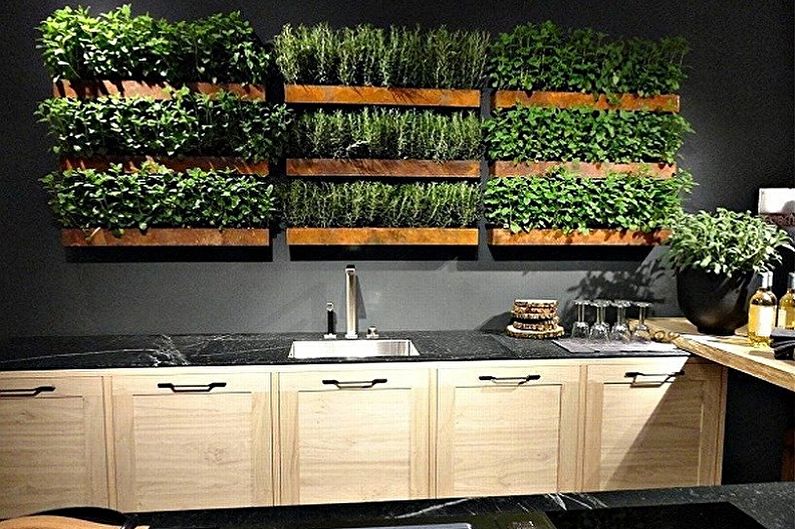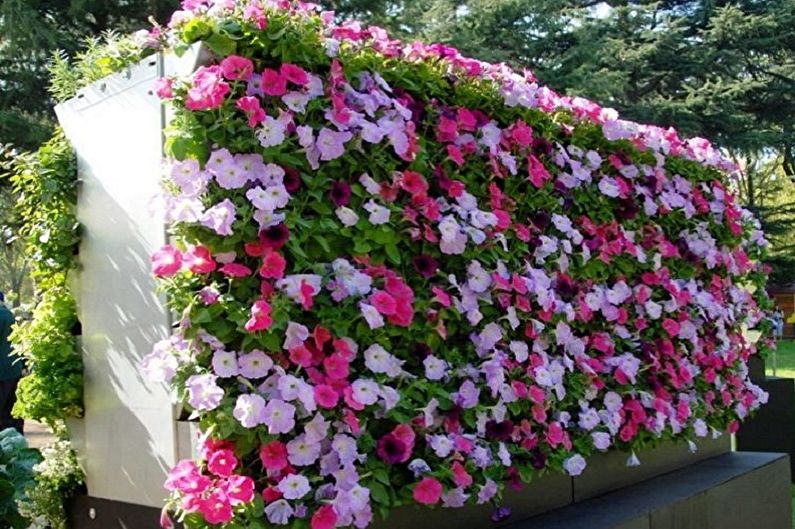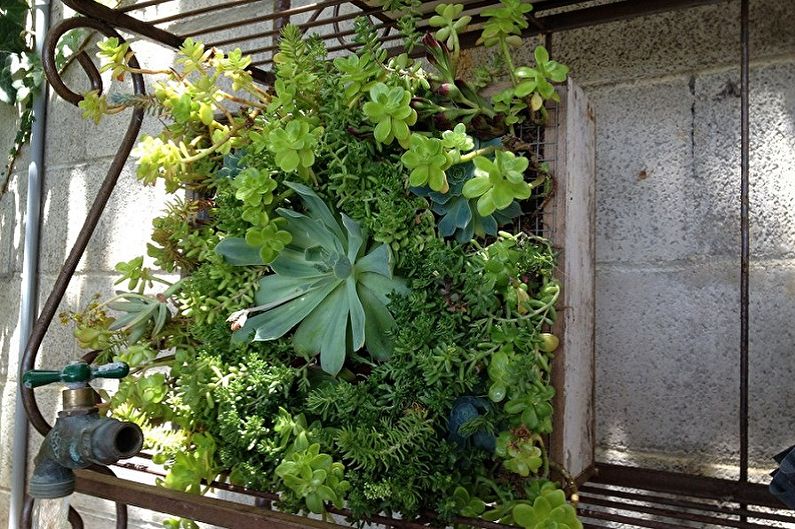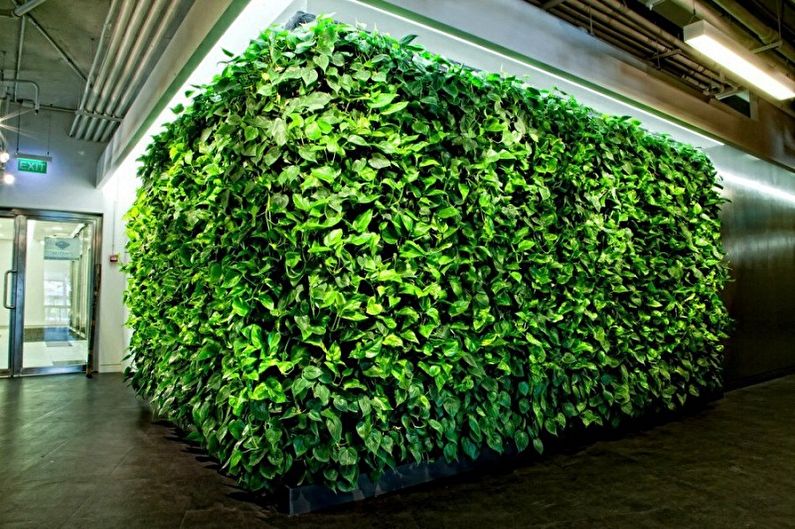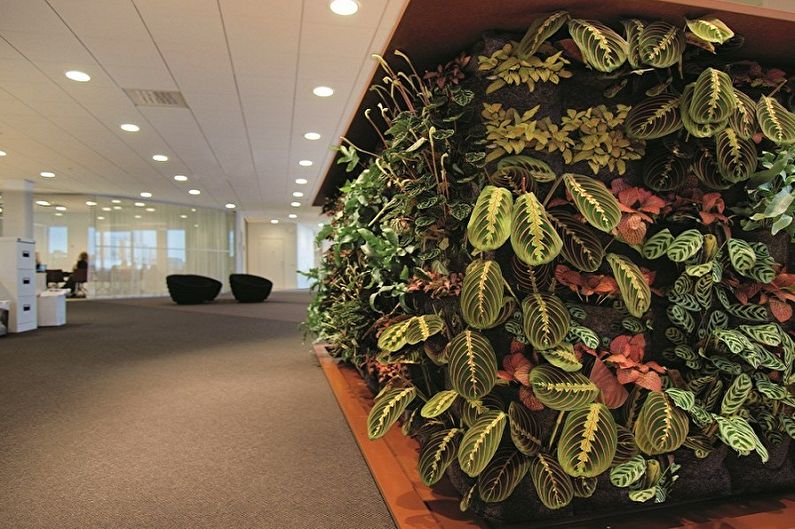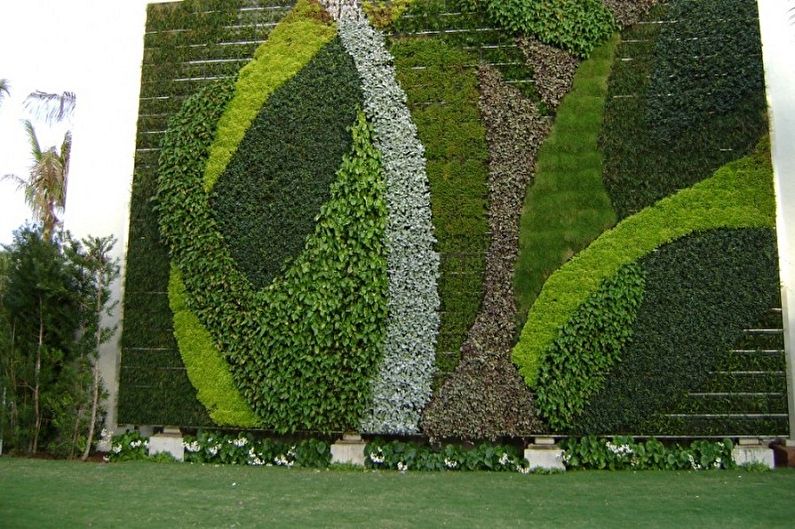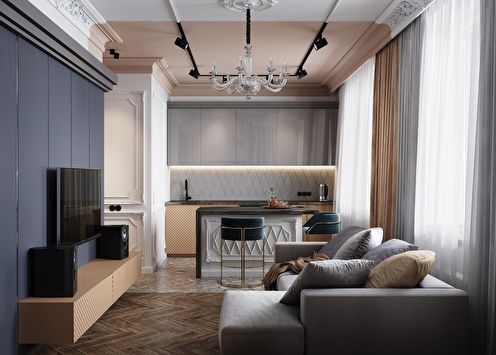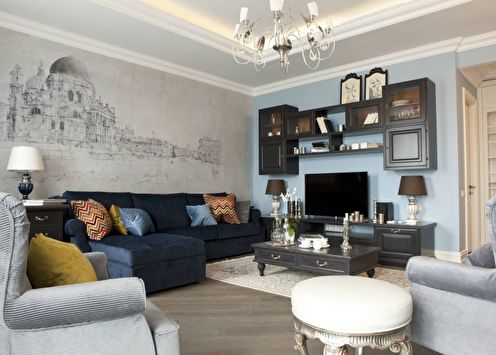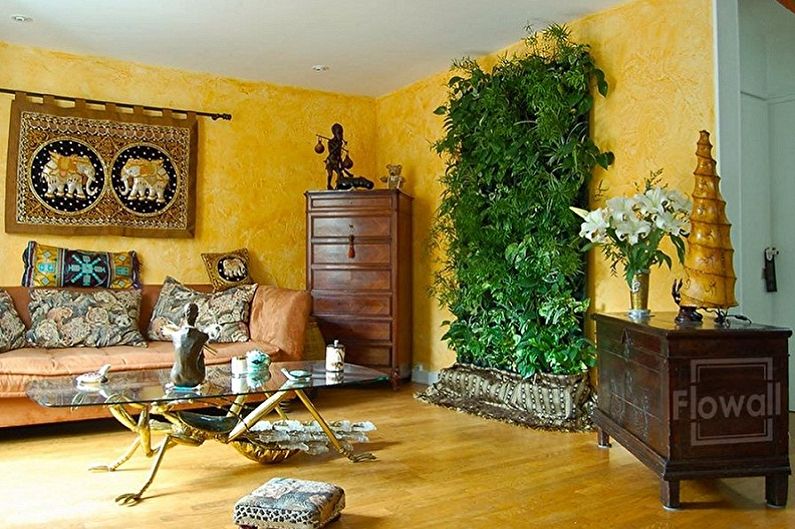
Recently, vertical gardening has become widespread. Placing plants not in a horizontal but in a vertical plane has its aesthetic charms and many practical advantages, which is why it is widely used for decorating buildings in private areas, as well as decorating the interiors of apartments, offices, restaurants. In our article, we will consider various ways of organizing vertical landscaping in different conditions, and also we will figure out which plants are better to choose.
Landscaping vertical landscaping
On the territory of the house area, vertical flower beds perform a number of functions. They are able not only to decorate and diversify the landscape design with their originality, but also bring great benefits.
Firstly, the placement of such structures will help save square meters of the house area. Climbing plants placed on pergolas and pergolas will save moisture and protect their masters in the hot season. If you place the plants on the plane of the wall of the house, you can get an excellent additional shell, which will not only hide all the existing defects of the structure, but also create a nice shadow, protecting the facade from overheating.
Vertical gardening is successfully used in zoning plots, acting as a hedge that can protect the territory from prying eyes, separate the territory of the recreation area, outbuildings, playgrounds, etc.
Views
Depending on the purpose of the green fence, it may have its own characteristics. In landscape design, you can find such types of vertical gardening as:
Arches - identical to the location in the interior, arched ceilings on the site serve to indicate transitions from one zone to another. Most often, the arch frame is made of metal or wooden planks, but stone or brick can also be used. In this case, it is necessary to make an arch of sufficient height (at least 2.2 m) so that descending plants do not interfere with free movement;
Pergolas - primarily such structures acted as supporting structures for vineyards and came to our house territories from Mediterranean countries. Now they are very successful in fulfilling the role of protecting certain areas from sunlight and simulating a tunnel around garden paths. Structurally, the pergola consists of sequentially arranged columns or arched ceilings, interconnected by bars. Decorated with climbing plants, it has an excellent appearance and takes not the last place in landscape design;
Green walls - this type of landscaping is formed on wooden hedges or stretched metal nets. It can also be columns with stretched chains or ropes, trellised cloths densely shrouded in vegetation. Such hedges are framed by garden house paths, individual sections;
Suspended structures are another common type of landscaping of walls, fences. Moreover, not only ordinary flower pots act as flowerpots, but also the most unexpected improvised means - bags, plastic bottles, tin cans, lampshades, etc. Such walls look quite original. You can also purchase ready-made phytomodules for planting low-growing plants;
Vertical flower beds - a beautiful design that deserves special attention.Such a composition can decorate a fence, a wall or be a pyramid of boxes of different sizes with short-growing brightly flowering plants (marigolds, petunias, short-growing asters, etc.).
One of the methods of vertical gardening is the arrangement of obelisks - high supports (pillars, trees), around which a climbing shrub plant grows. Such jewelry is more common in urban parks and squares than in private areas.
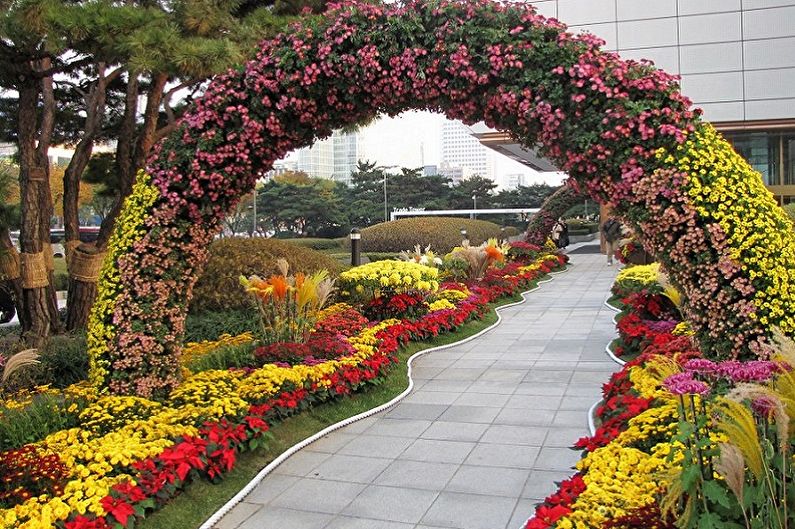
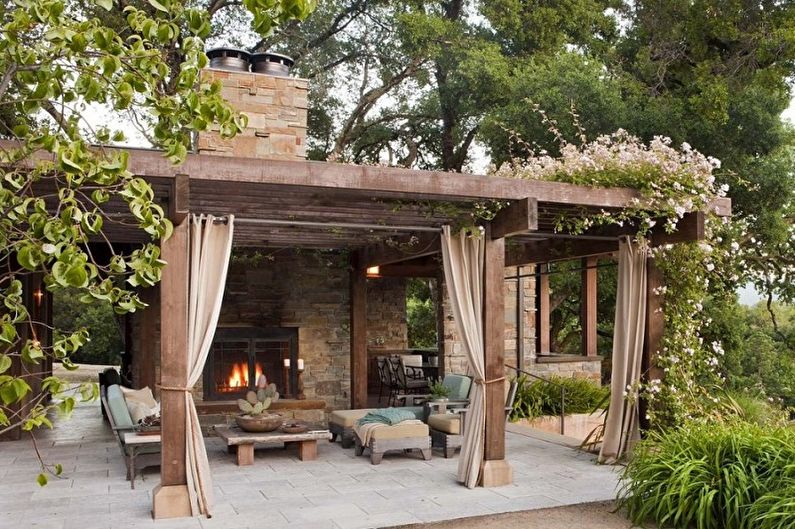
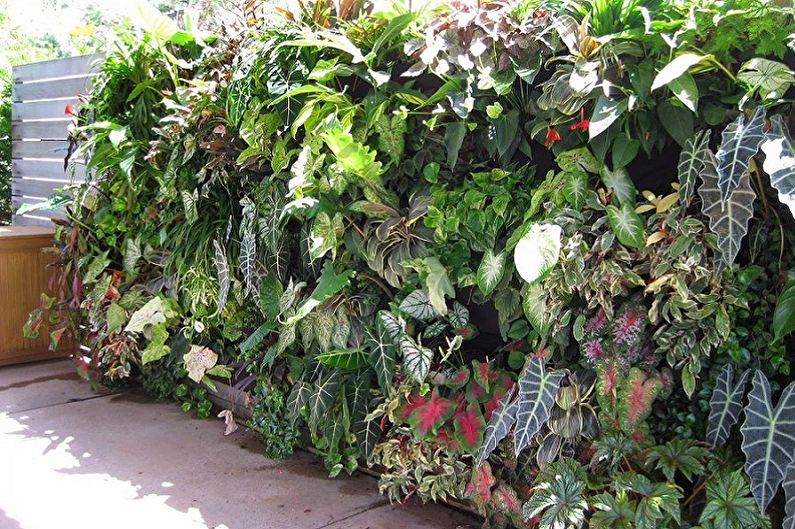
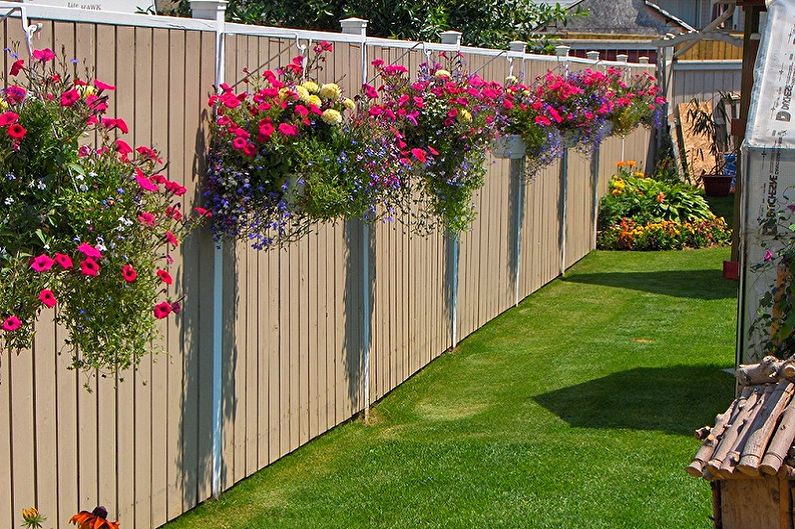
Which plants to choose
To create a beautiful vertical composition, use various plants that bloom in different periods - in this case, beauty can be enjoyed for a long period. Plants can be curly, ampelous, stunted. Conditionally climbing representatives of the flora can be divided into two teams, namely:
Annuals - as a rule, have a long flowering period, but require an annual transplant. These include bright nasturtium, unpretentious in care, morning glory with original flowers in the form of a gramophone, liana-shaped climbing kobe, as well as sweet peas blooming to the very frosts with a delicate aroma;
Perennial - bloom quite plentifully, but require careful care and top dressing. The most popular types of such plants in the vertical landscaping of the plots are climbing roses and clematis, pleasing with their bright flowering, a wood pliers, characterized by abundant greenery, fast-growing girl's grapes with unusually variegated foliage and berries, and, of course, the well-known ivy, which has many varieties.
Of the ampelous plants that can be planted in hanging pots, the pots often choose petunia, pelargonium, lobelia, etc.
Moss gained great popularity in vertical gardening, and this applies to both outdoor and indoor plant walls. It is completely undemanding in care, has a long life span, and is hypoallergenic. Street and indoor phytowalls can even form from vegetable crops and spicy plants, thereby not taking up space in the garden.
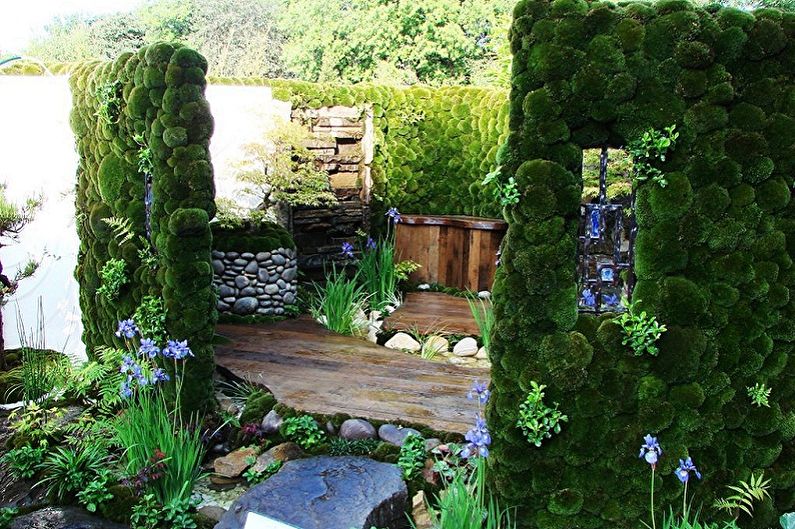
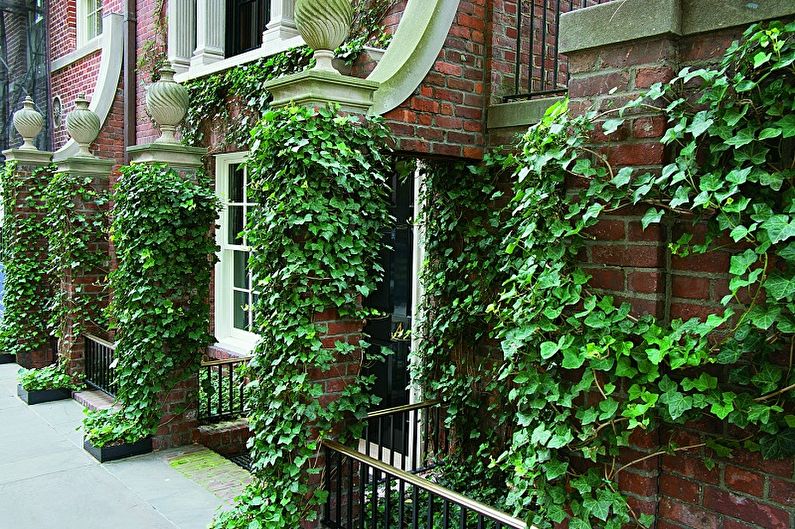
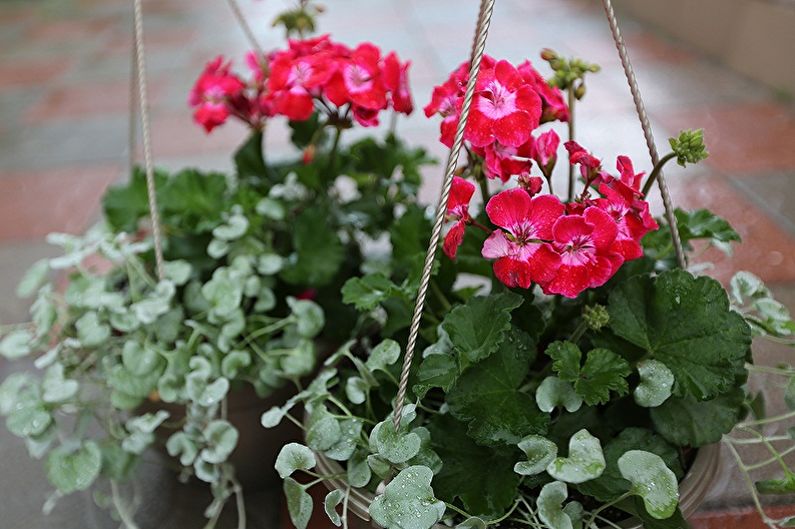
Vertical gardening in the interior
In apartments, vertical gardening is gaining great popularity over the years. This is due both to the aesthetic appeal of the phytowalls and to the ability to free window sills and balconies from flower pots, which take up a lot of space. With the help of green panels zoning is also carried out, placing them, as a rule, in recreation and eating areas, since the green color promotes better appetite and relaxation after a hard day.
Vertical phytostalls are able to provide an ecological situation in the house, which is important for the health of every person. They give the interior coziness, create a favorable microclimate and psychological comfort.
Methods of vertical gardening in the apartment
The easiest way to create phytowalls is to place racks along the wall, on which boxes with lush plants are installed. If the room does not have an empty wall, you can purchase special stands that are installed on the floor. There are also special phytomodules on sale in which flower pots are located at a certain slope, which allows you to make the whole wall alive. Such designs often decorate the premises of offices, cafes and other public places.
As well as in the design of the local area, the apartment uses hanging pots (planters) and other designs with ampelous plants. A new-fashioned phenomenon is a panel of succulents. It looks rather unusual and beautiful, but to make it with your own hands is not at all difficult. To do this, you need to place pots with plants in a spacious box, gluing them with quality bottoms. The space that forms between the containers can be decorated with straw, moss or burlap.
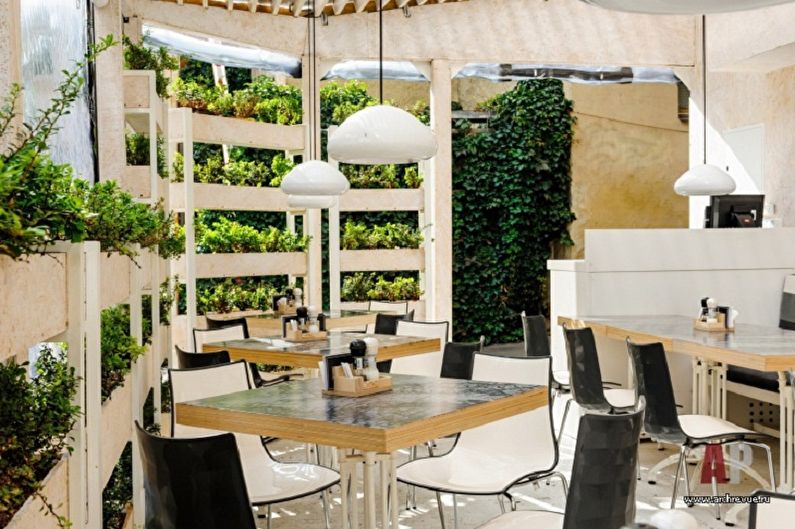

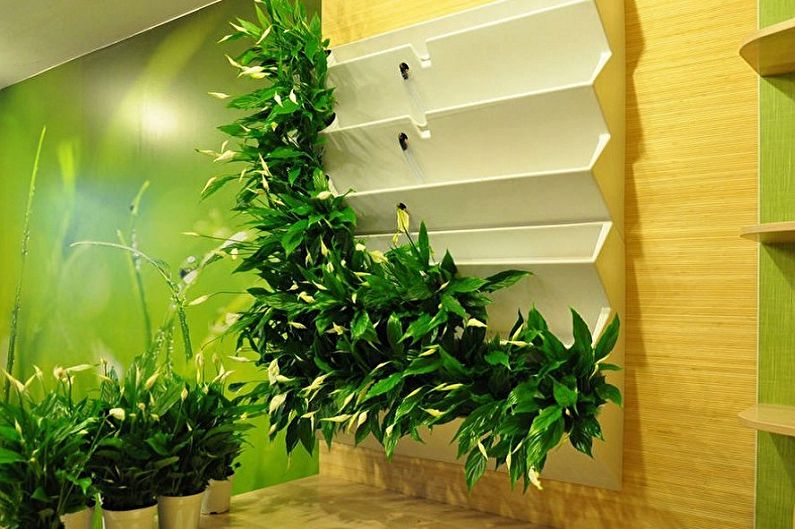
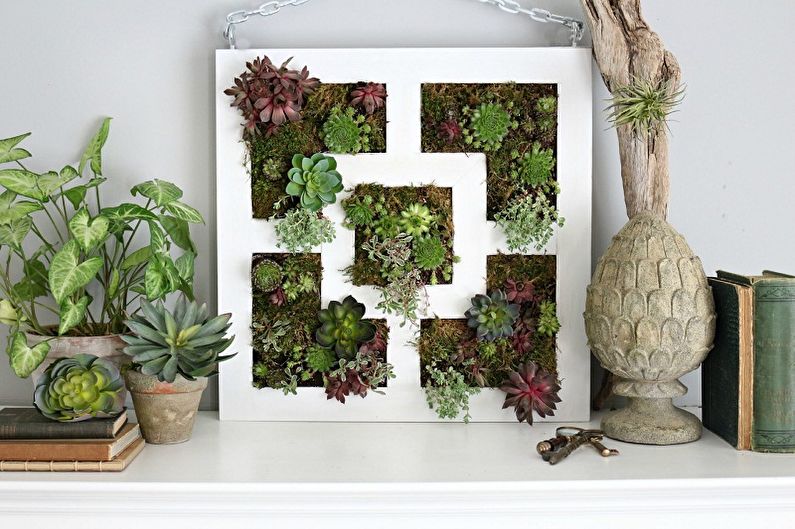
How to choose plants for the interior
In fact, the choice of plants for vertical composition in an apartment environment is very large and depends more on the personal preferences of the owners. However, it must be taken into account that it is better to choose unpretentious crops that do not require bright lighting, or take care of the organization of high-quality illumination and automatic watering of phytowalls. The most popular cultures are such as:
- Chlorophytums, having many varieties. They are not only lush and beautiful, but also able to process harmful substances that enter the air, therefore they are also useful;
- Philodendrons - evergreen perennials that grow quite quickly and are very fond of moisture;
- Ivy with a climbing stalk, on which many leaflets grow;
- Scindapsus - liana with large decorative leaves;
- Aspagarus is a rather lush plant that occupies a large volume. It has thin flexible stems with needle-leaves, creating a weightless airy look;
- Tradescantia - has colorful bright foliage, beautifully hanging in the form of loops.
In the kitchen you can arrange a vertical structure with a real mini garden where seedlings or herbs will grow.
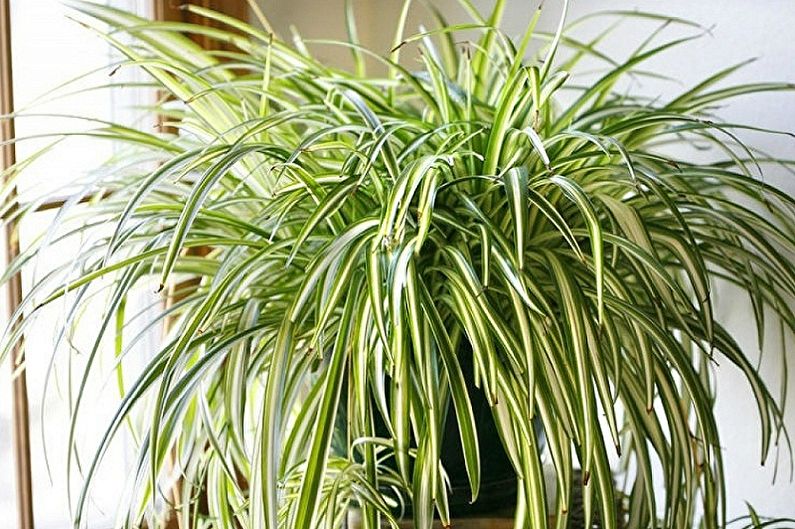
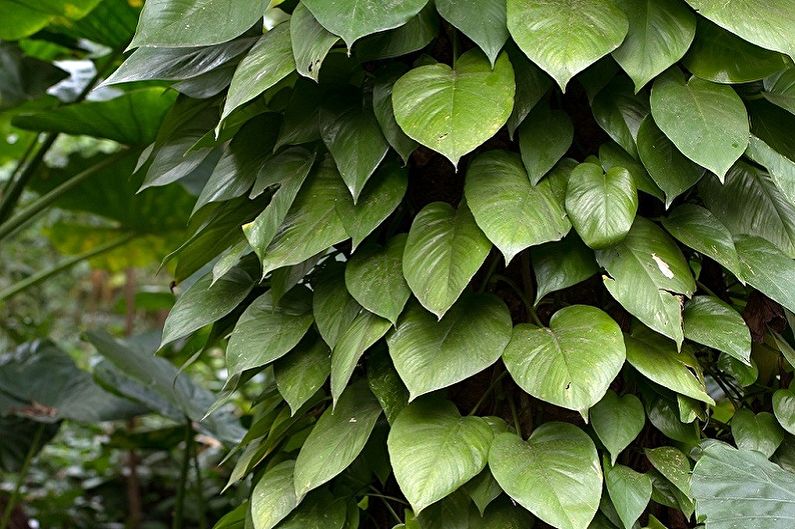
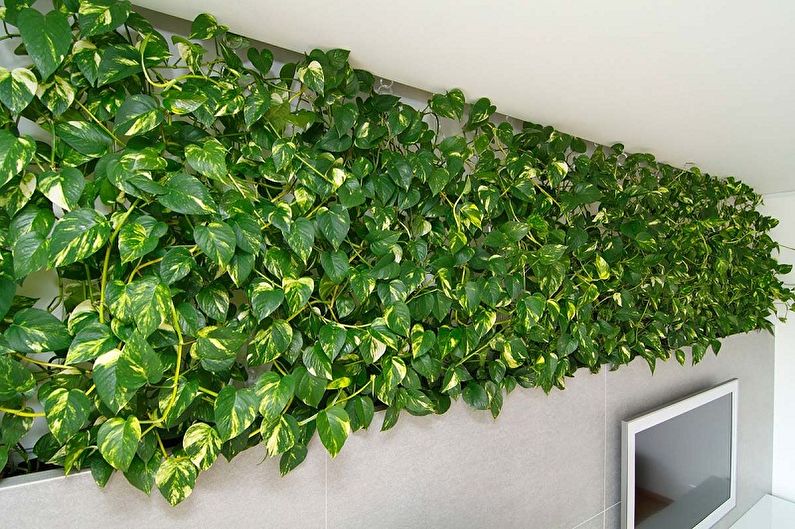
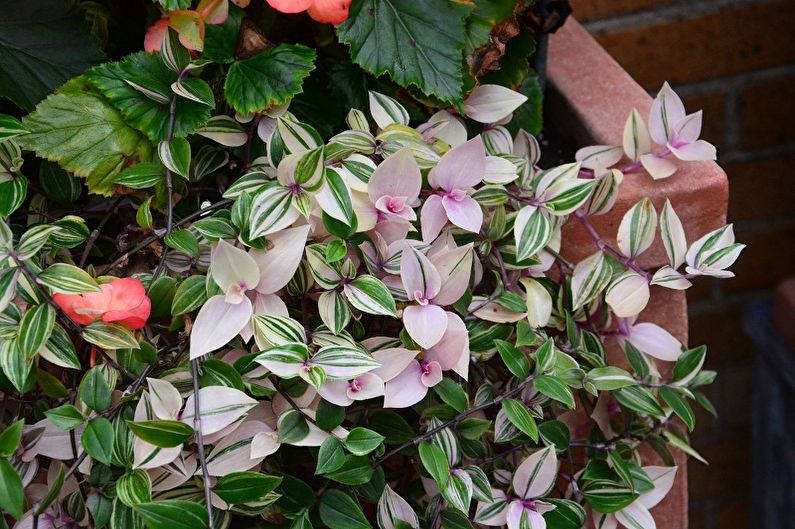
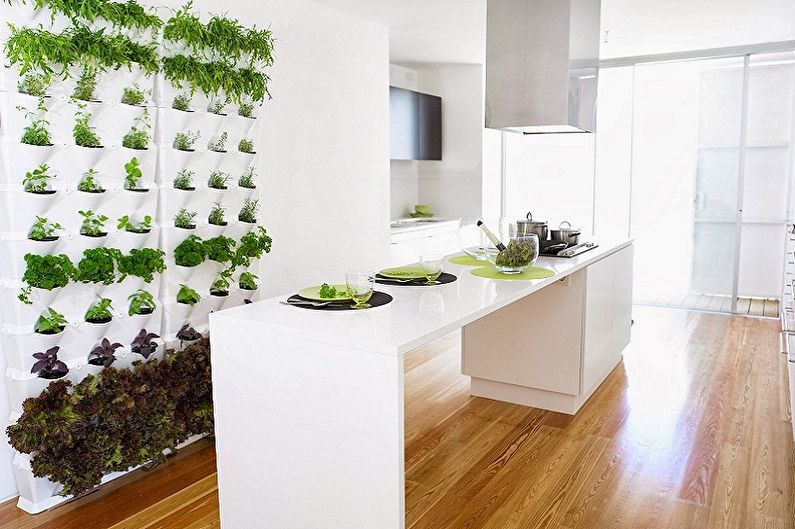
Vertical gardening - photo
Further familiarization with various methods of vertical gardening is proposed to continue in our gallery. Here you will find many photos of successful designs of phytowalls both in the territories of house sections and in interiors. Enjoy watching!
